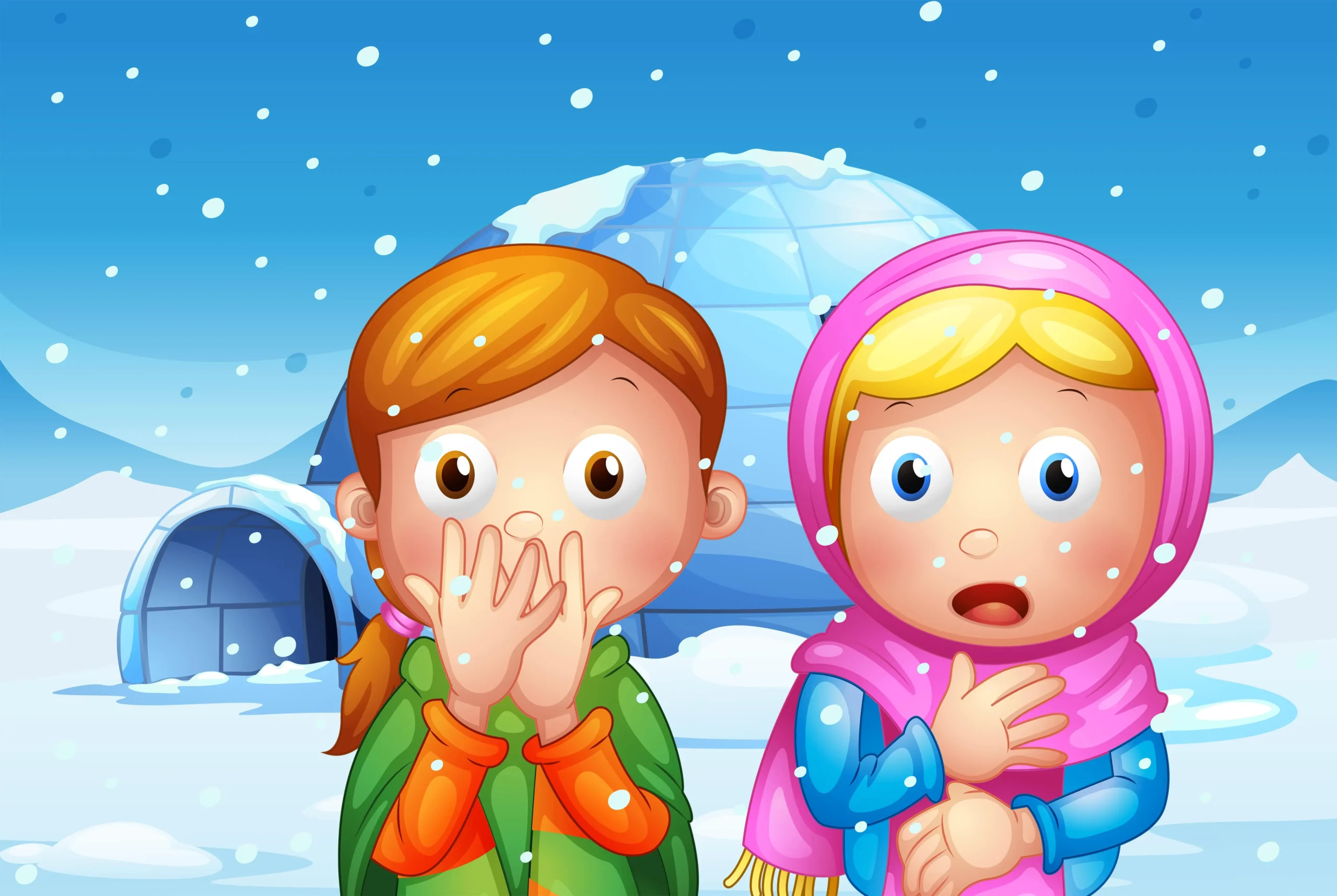Pagophobia is a unique and uncommon phobia that revolves around an intense and irrational fear of ice, cold, or anything associated with freezing temperatures. While it is not as widely recognized as more common phobias like arachnophobia (fear of spiders) or claustrophobia (fear of enclosed spaces), it can significantly impact the lives of those who suffer from it.
In this comprehensive article, we will delve into this phobia of ice, exploring its definition, causes, triggers, treatment options, and the differences between similar-sounding phobias like cryophobia and pagotophobia.
What is Pagophobia?
Pagophobia, derived from the Greek words “pagos” meaning ice or frost, and “phobos” meaning fear, is a specific phobia that manifests as a fear of ice or cold temperatures. Individuals with this phobia of ice experience intense anxiety, often accompanied by physical symptoms such as increased heartbeat, trembling, and shortness of breath, when confronted with cold environments or objects.
The Uncommon Nature of Pagophobia:
This phobia stands out as an uncommon phobia due to its specific focus on ice and cold. It is unlike the common phobias, about which everybody talks and there is a lot of knowledge/information present about them. It is highly unusual and this rarity makes it challenging for those who are affected to find understanding and support, as many people are unfamiliar with this condition.
Pagophobic Surfaces:
As we have discussed above the literal meaning of pagophobia, now you can easily think of it as something which is “anti-ice” . This phobia does have some practical applications in real life infrastructures.
Ice, snow, frost, and other icy stuff can cause big problems for things like solar panels, wind turbines, airplanes, heating systems, power lines, phones, and submarines. It can make these things work less well, use more energy, break down, and be dangerous.
To deal with these problems, scientists have been studying how liquids and surfaces act when it’s really cold. They researched and came up with the idea of pagophobic surfaces, which are kind of like super water-resistant surfaces but for ice. They work in a similar way, but they’re made to stop ice from sticking to it.
In this way they have been proven to be very effective in cold environments for different kinds of infrastructure.
Causes of Pagophobia:
Understanding the causes and triggers of this phobia of ice is essential in addressing this unique phobia:
Traumatic Experiences:
Like many phobias, traumatic experiences related to ice or cold can trigger it. A past incident, such as falling through ice or being exposed to extreme cold, can leave lasting emotional scars.
Genetic Predisposition:
Some individuals may have a genetic predisposition to develop specific phobias, including this phobia. Family history can play a role in the development of such fears.
Evolutionary Theories about Pagophobia:
Some researchers propose that this phobia of ice could be an evolutionary adaptation, where humans who feared extreme cold were more likely to survive in harsh environments.

Common Triggers:
Here are some of the common triggers of this phobia:
Winter Weather:
The arrival of winter, with its freezing temperatures and icy conditions, can be a significant trigger of this.
Cold Water or Ice:
The sight or touch of cold water or ice cubes can induce intense fear and anxiety in pagophobic individuals.
Specific Objects Related to Cold:
Everyday objects associated with cold, such as ice cream or frozen foods, can also trigger anxiety and avoidance behaviors.
Symptoms of Pagophobia:
Here are the most common symptoms faced by these individuals:
Physical symptoms
- Increased heart rate
- Shortness of breath
- Trembling or shivering
Psychological symptoms
- Anxiety and panic attacks
- Avoidance behaviors
- Intrusive thoughts related to ice and cold
Treatment:
To overcome this phobia of ice, a combination of therapeutic approaches and self-help strategies are used:
Cognitive-Behavioral Therapy (CBT):
CBT helps individuals identify and challenge irrational thoughts and beliefs related to cold and ice. It also teaches coping mechanisms to manage anxiety.
In CBT, there is counseling of pagophobic individuals which first changes their cognition and then ultimately their behavior towards the suspected objects. It is made clear to them that these suspected objects neither cause any harm nor do they have this ability.
Exposure Therapy:
Gradual exposure to cold environments or objects in a controlled and supportive setting can help desensitize individuals to their fears.
In this therapy, the affected individual is slowly exposed to the stimuli. In this case that stimulus is “ice”, which is not harmful at all but apparently appears as a “harmful stimulus” for him.
When the individual is exposed to that stimulus repeatedly, and that stimulus doesn’t cause any harm or produce any inconvenience, then the individual learns that his perspective about this stimulus was wrong.
That’s how exposure therapy works and the individual learns to confront the fear, which ultimately reduces the anxiety response associated with cold environments.
Medications:
In some cases, doctors may prescribe anti-anxiety medications to alleviate the symptoms of this phobia. These are typically used in conjunction with therapy.
Relaxation Techniques:
Learning relaxation techniques, such as deep breathing and progressive muscle relaxation, can help individuals manage anxiety when confronted with cold stimuli.
Mindfulness and Meditation:
Mindfulness practices can increase awareness of thoughts and emotions, allowing individuals to gain better control over their fear responses.
Gradual Desensitization:
Self-guided exposure to cold stimuli, starting with less anxiety-inducing situations and gradually progressing, can be an effective self-help strategy.
Cryophobia vs Pagophobia:
Cryophobia, derived from the Greek word “kruos” meaning cold, also refers to the fear of ice, cold temperatures or cold places. Pagophobia and cryophobia share similarities in that both involve an intense fear of cold or icy conditions.
While these phobias have distinct names, in Greek literature their meanings are the same. That’s why they both center around a common theme of extreme discomfort and anxiety when confronted with cold temperatures, icy environments, or frozen objects.

Pagotophobia vs Pagophobia:
It’s essential to distinguish between these two, as these terms are sometimes used interchangeably, but they refer to different conditions:
Pagotophobia is specifically the fear of ice cream, primarily provoked by the sensation of ice cream freezing in the mouth. This specific phobia is more prevalent among children and teenagers, often causing distress during the simple pleasure of enjoying frozen treats.
It revolves around the perception that ice cream consumption can lead to an internal freezing, despite this not being a physiological reality.
On the other hand, pagophobia has a broader spectrum of fears related to cold, such as frost, snow, or icy environments. Unlike the highly specific nature of pagotophobia, it can affect individuals of various age groups and is not tied to a particular physical sensation.
Importance of raising awareness about uncommon phobias:
Raising awareness about uncommon phobias like peladophobia, scotophobia etc is crucial for several reasons. First and foremost, it helps individuals suffering from these rare fears realize that they are not alone.
The isolation that often accompanies having an unusual phobia can be emotionally distressing, and knowing that others share similar experiences can provide a sense of comfort and validation.
Additionally, increased awareness can lead to better understanding and empathy from the broader community. It encourages people to be more considerate and supportive of those with uncommon phobias, reducing the stigma associated with mental health conditions.
Conclusion:
In conclusion, pagophobia is a unique and uncommon phobia characterized by an overwhelming fear of ice, cold, and anything related to freezing temperatures. As it is not as prevalent as more well-known phobias, but it does exist.
Understanding the causes, triggers, and available treatment options is crucial in helping pagophobic individuals manage their fears and lead more fulfilling lives.
If you or someone you know struggles with pagophobia, seeking help from mental health professionals is the first step toward overcoming this specific phobia of ice. With the right support and strategies, individuals can learn to cope with their fears and regain control over it.
FAQs:
What is Pagotophobia?
Although it is very much related to cold phobias but it do have a distinctive feature. Pagotophobia is a very narrow term which specifically refers to the fear of eating ice cream.

